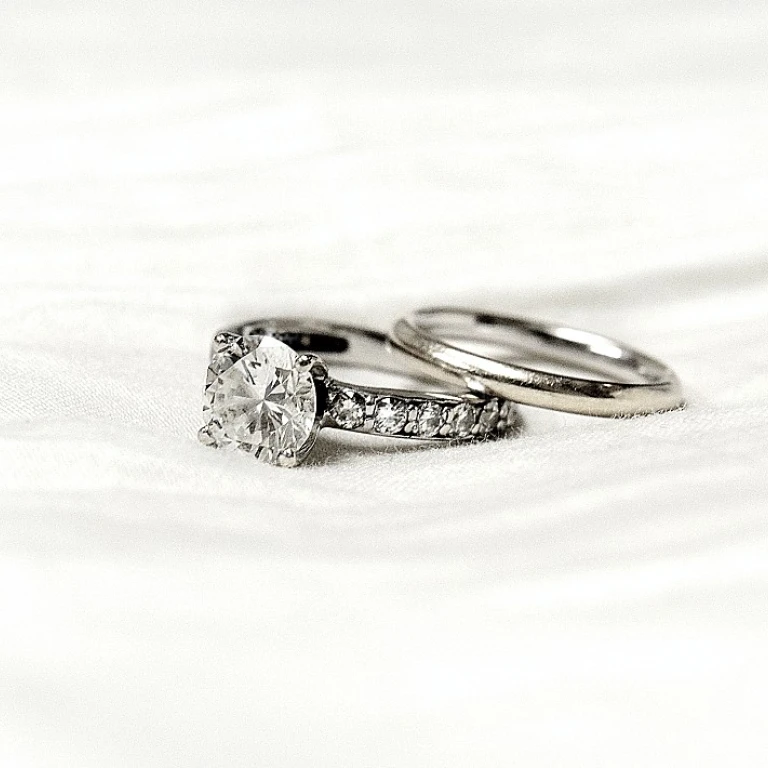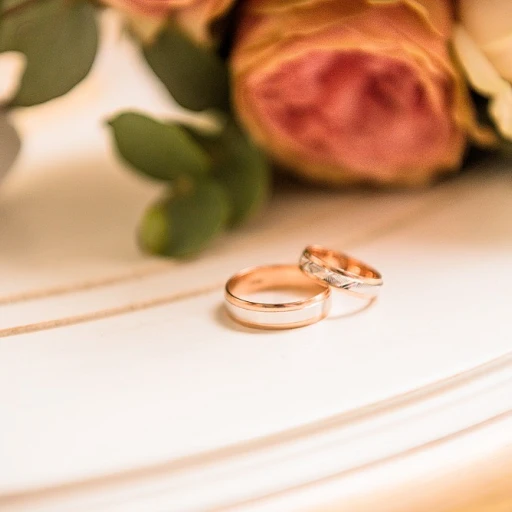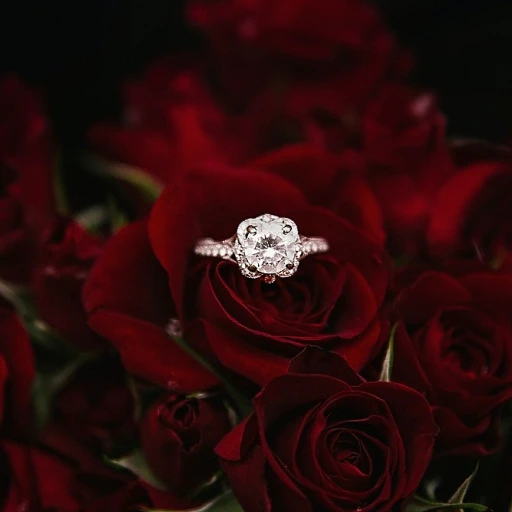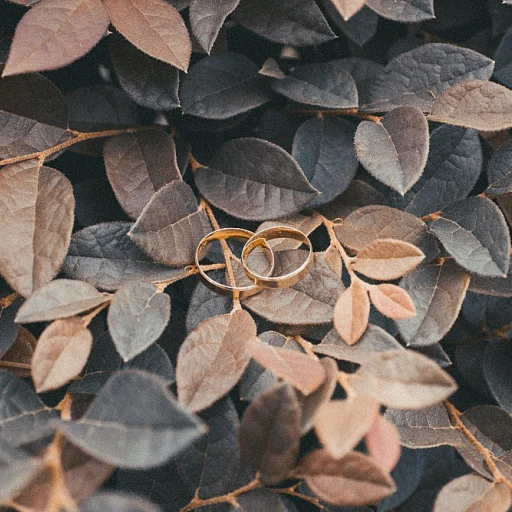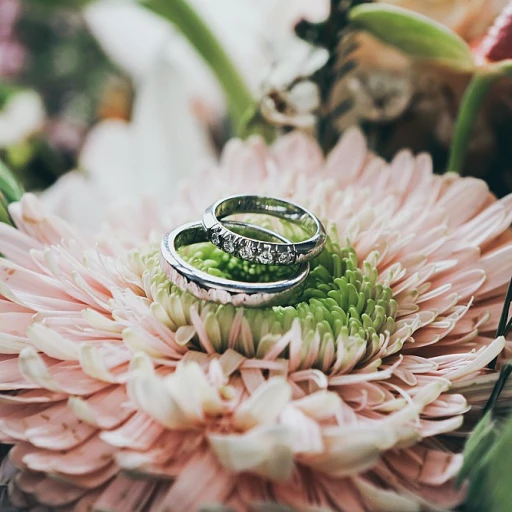Understanding the Appeal of Stone-Set Wedding Rings
The Timeless Charm of Stone-Set Wedding Rings
Stone-set wedding rings have captivated couples for centuries, offering a blend of elegance and personal expression. The allure of these rings lies in their ability to combine the traditional symbolism of marriage with the unique beauty of gemstones. Whether you are drawn to the classic appeal of a diamond engagement ring or the vibrant hue of a blue sapphire, stone-set rings provide endless possibilities for customization.
One of the primary attractions of stone-set wedding rings is their versatility. They can be crafted in various metals such as white gold, yellow gold, and rose gold, allowing you to choose a band that complements your style. The rise of raw crystal stone settings has also added a modern twist to these timeless pieces, appealing to those who prefer a more unconventional look.
Furthermore, the variety of cuts available, such as oval, pear, and emerald cut, allows for further personalization. A halo setting can enhance the stone's brilliance, making it a popular choice for those who want their ring to make a statement. Additionally, stone-set rings can be designed as a part of a wedding band set, ensuring that your engagement and wedding rings are perfectly matched.
When considering the price of stone-set wedding rings, it's essential to factor in the type of gemstone and the complexity of the setting. While diamonds remain a popular choice, alternatives like moissanite and lab-grown stones offer a similar sparkle at a more affordable price. For those with a penchant for color, stones like emerald, sapphire, and moss agate provide a stunning contrast to traditional diamond rings.
Ultimately, the appeal of stone-set wedding rings lies in their ability to reflect the wearer's personal taste and the couple's unique love story. As you explore your options, remember that these rings are not just a symbol of commitment but also a testament to your individual style and the journey you are embarking on together.
Popular Gemstone Choices for Wedding Rings
Exploring Popular Gemstone Options
Choosing the right gemstone for your wedding ring is a delightful journey that reflects personal taste and style. While diamonds have long been the traditional choice, many couples are now exploring a variety of gemstones that offer unique beauty and significance. Here’s a closer look at some popular options:
- Diamond: Known for its timeless elegance and unmatched sparkle, the diamond remains a favorite for many. With various cuts like oval, pear, and emerald cut, a diamond engagement ring can be tailored to any preference.
- Sapphire: Blue sapphire is cherished for its deep, mesmerizing hue. It's a durable option that stands the test of time, often paired with white gold or yellow gold bands.
- Emerald: This vibrant green stone is a symbol of rebirth and love. An emerald cut engagement ring offers a classic yet distinctive look.
- Moissanite: A brilliant alternative to diamonds, moissanite offers a similar sparkle at a more accessible price point, making it a popular choice for those on a budget.
- Moss Agate: For those seeking something truly unique, moss agate offers a natural, earthy appearance that stands out from traditional choices.
Each gemstone brings its own allure and charm to wedding rings, allowing couples to express their individuality. Whether you’re drawn to the classic appeal of a diamond ring or the vibrant color of a sapphire, there’s a gemstone to suit every style and budget.
For more inspiration on unconventional gemstone choices, explore the rise of raw crystal stone settings in modern wedding rings.
The Symbolism Behind Different Stones
The Deeper Meaning of Gemstones in Wedding Rings
Choosing a stone for your wedding ring is more than just about aesthetics. Each gemstone carries its own symbolism, adding a layer of personal significance to your ring. Understanding the meaning behind different stones can help you select a ring that truly resonates with your relationship.
- Diamond: Often the first choice for engagement rings, diamonds symbolize strength and eternal love. Their enduring quality makes them a timeless choice for wedding bands.
- Sapphire: Known for its rich blue hue, sapphire represents loyalty and trust. It’s a popular choice for those looking to add a touch of color while maintaining a classic look.
- Emerald: With its vibrant green color, emerald is associated with renewal and growth, making it a meaningful choice for couples starting a new chapter together.
- Moissanite: A stunning alternative to diamond, moissanite symbolizes brilliance and clarity, often chosen for its affordability and ethical sourcing.
- Moss Agate: This unique stone is appreciated for its earthy appearance and is believed to bring balance and stability.
Incorporating these stones into your wedding ring can be done in various styles, such as a classic solitaire or a hidden diamond setting that adds an element of surprise. Whether you opt for an emerald cut or a halo setting, the choice of stone and its symbolism can enhance the personal story your ring tells.
When considering your options, it’s also important to think about how the stone will complement the metal of the band. Yellow gold, white gold, and rose gold each offer distinct looks that can enhance the stone’s natural beauty. For those on a budget, lab grown diamonds or moissanite offer a cost-effective alternative without compromising on beauty.
Ultimately, the right stone for your wedding ring is one that reflects your personal style and the unique journey of your relationship. For more insights into selecting the perfect gemstone, explore our article on modern wedding rings and the rise of raw crystal stone settings.
Customizing Your Stone Wedding Ring
Personalizing Your Stone-Set Wedding Ring
Creating a wedding ring that truly reflects your personality and love story involves a thoughtful approach to customization. With numerous options available, you can design a ring that is as unique as your relationship. Here are some key considerations when customizing your stone-set wedding ring:
- Choosing the Right Stone: While diamonds remain a popular choice, consider alternatives like sapphire, emerald, or moissanite for a distinctive touch. Each stone has its own allure and symbolism, which can add personal meaning to your ring.
- Metal Selection: The metal of your band can significantly impact the overall look of your ring. Options range from classic yellow gold and white gold to the more modern rose gold. Each metal complements stones differently, so consider how they pair with your chosen gemstone.
- Cut and Setting Style: The cut of the stone, such as oval, pear, or emerald cut, can enhance its brilliance and appeal. Additionally, the setting style, whether it's a halo, three stone, or a unique band design, can further personalize your ring.
- Engraving and Details: Adding an engraving or intricate details to your ring can make it even more special. Consider inscribing a meaningful date, phrase, or symbol inside the band.
- Matching Wedding Bands: If you have an engagement ring, consider how your wedding band will complement it. Coordinating the two can create a harmonious and elegant ring set.
Customizing your wedding ring allows you to create a piece that not only fits your budget but also tells your unique love story. Whether you opt for a diamond engagement ring or explore the beauty of moss agate or lab-grown stones, the possibilities are endless. Remember to consider the regular price and sale price of materials when planning your design.
Caring for Your Stone-Set Wedding Ring
Maintaining the Sparkle of Your Stone-Set Wedding Ring
Stone-set wedding rings are a beautiful expression of love and commitment, but they require proper care to maintain their allure. Whether your ring features a classic diamond, a vibrant sapphire, or an elegant emerald, each stone has unique needs. Here's how to keep your ring looking its best:
- Regular Cleaning: Regular cleaning is essential to keep your stone-set ring sparkling. Use a gentle soap and warm water solution, and a soft brush to remove dirt and oils. Avoid harsh chemicals, especially for stones like moss agate or emerald, which can be sensitive.
- Check the Setting: Regularly inspect the setting of your ring. Stones like diamonds, sapphires, and moissanite are often held in place by prongs. Ensure these are secure to prevent any loss. A professional jeweler can help with this during your annual ring check-up.
- Safe Storage: When not wearing your ring, store it in a soft pouch or lined jewelry box to prevent scratches. Keep it away from other jewelry, especially if your ring has an intricate halo or three stone design.
- Avoid Harsh Conditions: While gold and platinum bands are durable, stones can be damaged by harsh conditions. Remove your ring when doing household chores, gardening, or swimming to protect it from chemicals and physical damage.
- Professional Maintenance: Just like a car, your ring needs regular professional maintenance. Take your ring to a jeweler annually for a thorough cleaning and inspection. This ensures that the setting remains secure and the stone retains its brilliance.
By following these care tips, you can ensure that your stone-set wedding ring continues to shine as brightly as the day you first wore it. Whether it's a diamond engagement ring or a unique lab grown sapphire set in rose gold, proper care will preserve its beauty for years to come.
Budgeting for Stone Wedding Rings
Smart Strategies for Managing Your Wedding Ring Budget
When planning for a stone-set wedding ring, understanding the financial aspects is crucial. With a variety of gemstones, metals, and designs available, prices can vary significantly. Here’s how to navigate the budgeting process effectively:
- Set a Realistic Budget: Determine how much you’re willing to spend on both the engagement ring and the wedding band. Consider factors like the type of stone, whether it's a diamond, sapphire, or moissanite, and the metal choice, such as white gold, yellow gold, or rose gold.
- Understand the Price Factors: The cost of a ring is influenced by the stone's cut, clarity, carat, and color. For instance, an emerald cut or oval diamond might have a different price compared to a pear or halo setting. Similarly, lab-grown diamonds often offer a more budget-friendly alternative without compromising on quality.
- Compare Regular and Sale Prices: Keep an eye on sales and discounts. The regular price of a ring can be significantly reduced during a ring sale, offering you the chance to purchase a more luxurious piece within your budget.
- Customization Costs: Customizing your ring, whether through unique band designs or stone settings, can affect the overall price. Discuss options with your jeweler to find a balance between personalization and cost.
- Consider Alternative Stones: While diamonds are a popular choice, other stones like moss agate or blue sapphire can offer unique beauty at a lower cost. These alternatives can also carry special symbolism, adding personal significance to your ring.
Ultimately, the key is to balance your desires with financial practicality, ensuring that your wedding rings are both meaningful and within your means.

